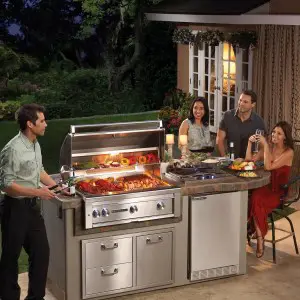When you start designing a garden for people with disabilities, you have to take into account their needs, the type of physical impairment that is keeping them from leading a normal life, and their personal tastes regarding how the garden should look. Being easily accessible is an important aspect, so we have gathered some pieces of advice that will help you create the best garden for people with disabilities.
-
- People with disabilities will also want to take a walk in their garden, although they are might not be able to use their legs for the job. In case you are designing the garden for someone who is using a wheelchair at all times, you must make sure you design many alleys and paths that will lead them to the main points, such as the entrances or the table area. The alleys must be made of cement in order to provide a smooth journey regardless of the mobility aid used.
-
- If the person in the cause is not using a wheelchair, but still has some issues walking and is sometimes using a mobility scooter, you should adapt the design of the garden to their needs. Alleys are also required, but you can also create some paths framed by handrails so the disabled person can get out of the mobility scooter and start walking along with the garden.
- In case you are designing a public garden or you have plenty of space on your hands, make sure you design benches along the way and several stoppage areas where the disabled person can stop, relax, and enjoy the view without getting tired or intruding on the other visitors. If you are designing a personal garden, make sure you place the table and chairs at a proper distance from the entrance so the person in the cause can sit down shortly after entering the garden.
-
- Many gardens are located under the house’s level, which implies building stairs that will lead you to them, but this could also imply some risks for people with disabilities who might trip and fall down the stairs. To avoid such situations, you must install an outdoor stairlift that will transport them up and down the stairs. Similar to the indoor stairlift, the outdoor model must also be installed on the stair rail but the difference is in the powering mode and the materials used. Outdoor stairlifts are made with weatherproof components to last to the environment, can operate longer on batteries, and offer stability and safety to those who want to handle the stairs on their patio or porch.

